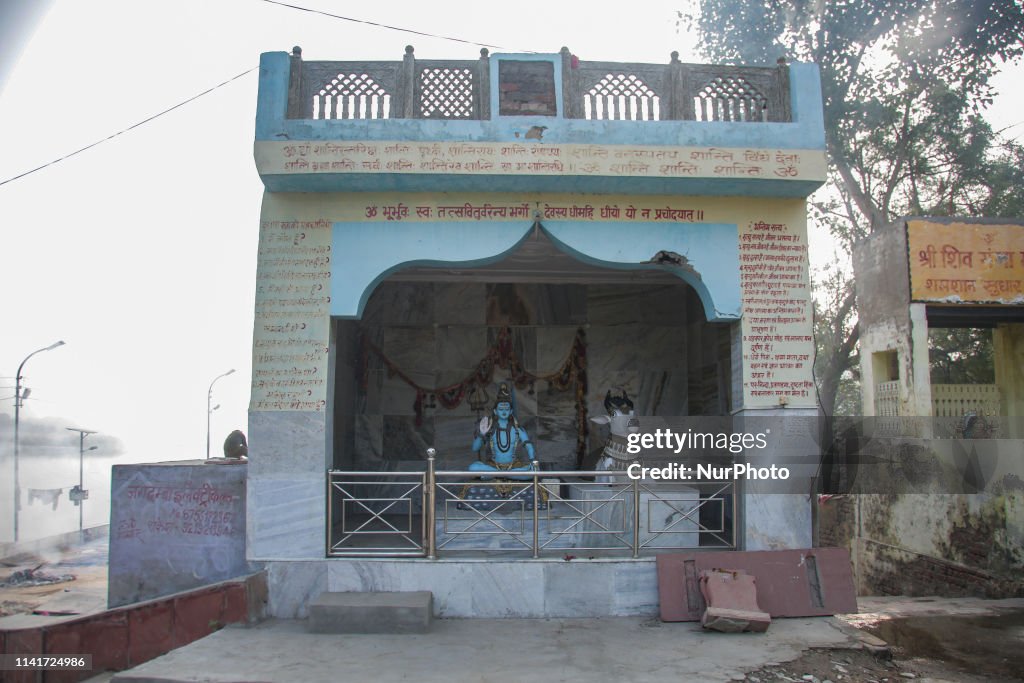Tajganj Cremation Center In Agra
Tajganj Cremation Center in Agra, Uttar Pradesh state in India. The cremation center with some shrines and temples lies on the riverbank of the polluted Yamuna river near Taj Mahal. Yamuna river of Jumna or Jamna has great religious significance in Hinduism, with the important goddess Yamuna or Yami, it as it is related with the gods like Yama, Sun god, Jrishna etc The Indian government tries to prevent traditional cremation as it creates pollution in the river water with rich in carbon leftover ashes, polluting the surrounding shore, needing at least 300kg of wood for the fire that comes from forests, toxic fumes and smoke from the burn and leaving garbage behind. It is also an expensive ceremony. Lower Caste people like Shudras or Sudir, Dalits or Dalt are mainly the Doms, they are the caretakers of the cremation center and ground, the keepers of the fire, they are needed for the ritual like priests. After the burial ritual with the pyre and family members chanting sacred hymns, the leftover unburned parts and ashes are thrown to the river with some bones that didn't become ashes, afterwards the doms clean the cremation center with earthen pots carrying sacred water from the river. Scavengers, dogs, monkeys or cows are often around the trash from the burial. Scavenger also check the water for precious metal left in the place where the ashes are thrown. (Photo by Nicolas Economou/NurPhoto via Getty Images)

PURCHASE A LICENSE
How can I use this image?
$575.00
CAD
DETAILS
Restrictions:
Contact your local office for all commercial or promotional uses.
Credit:
Editorial #:
1141724986
Collection:
NurPhoto
Date created:
April 24, 2019
Upload date:
License type:
Release info:
Not released. More information
Source:
NurPhoto
Object name:
economou-notitle190424_npMLc
Max file size:
4600 x 3067 px (15.33 x 10.22 in) - 300 dpi - 4 MB
- Adult,
- Agra,
- Alms,
- Ancient,
- Architecture,
- Asceticism,
- Ash,
- Asia,
- Awe,
- Blue,
- Building Exterior,
- Burning,
- Caste,
- Ceremony,
- Charity and Relief Work,
- City,
- Cityscape,
- Cleaning,
- Cow,
- Cremation,
- Crematorium,
- Cultures,
- Day,
- Dead,
- Dead Animal,
- Dead Person,
- Death,
- Dirty,
- Dog,
- Environment,
- Exploration,
- Facade,
- Famous Place,
- Fire - Natural Phenomenon,
- Flame,
- Funeral,
- Ganges River,
- Ghat,
- God,
- Hinduism,
- History,
- House,
- India,
- Indigenous Culture,
- Karnataka,
- Krishna,
- Monkey,
- Nautical Vessel,
- Palace,
- People,
- Pilgrimage,
- Place of Burial,
- Pollution,
- Poverty,
- Praying,
- Priest,
- Religion,
- Respect,
- River,
- Riverbank,
- Sadhu,
- Scavenging,
- Shiva - Hindu God,
- Shrine,
- Sky,
- Smoke - Physical Structure,
- Social Issues,
- South Asia,
- Spirituality,
- Street,
- Taj Mahal,
- Tourism,
- Tradition,
- Travel,
- Uttar Pradesh,
- Varanasi,
- Washing,
- Water,
- Water Pollution,
- Women,
- Yamuna River,